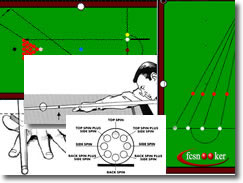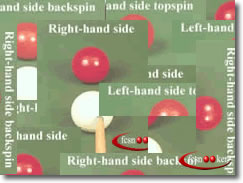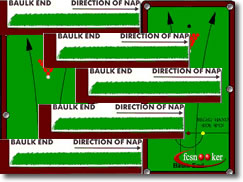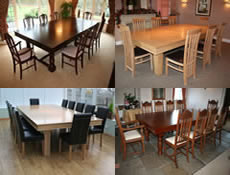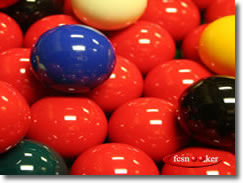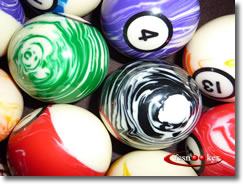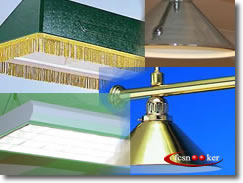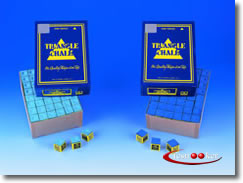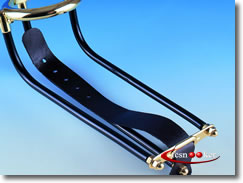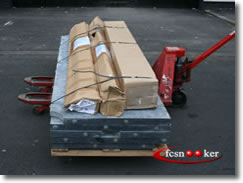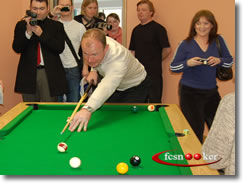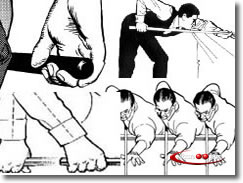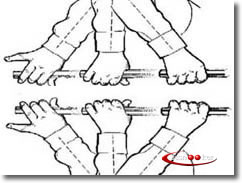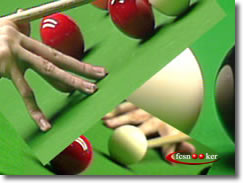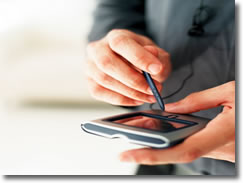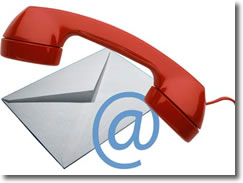 |
|
|
fcsnooker
- Top Quality Snooker Coaching and Instruction in association
with Mr Frank Callan -
Intermediate Level - |
 |
|
Every snooker cloth, like a carpet at home, has a pile, though they are normally not as noticeable as the one on which we walk every day.
Only when the balls are running slowly will this come into operation, but it is very important because if you are forced to play a slow shot it could easily be influenced by the nap. The thickness of the cloth will have a bearing on this. Most snooker clubs have thick cloths on their tables because they wear longer, and cloths like this could have a really noticeable run-off, while with a very fine cloth it would be a lot less.
But where it is the cue ball that has the distance to travel, the nap can affect it so much that it drifts away from the intended contact point on the object ball. It is not very easy to judge how much allowance should be made. Once again, it is trial and error. Be even warier, though, of slow shots against the nap if you have to play over some distance to the object ball. One shot which constantly highlights the differences in nap is a ball played slowly towards a middle pocket from the area between the black and pink spots. On a table with a very heavy nap, the ball will fall very sharply towards the side cushion. If the shot is played dead weight, you should be aiming to pot it on to the far jaw of the middle pocket or even slightly beyond. On a very fine championship cloth, the ball will deviate very little on this type of shot so that the ball can be aimed at the pocket opening or the inside of the far jaw. If you play up the table, towards the black spot, using right-hand side, the cue ball, when it starts to slow down, will tend to drift to the right. With left-hand side it will tend to drift to the left. However, the situation is reversed when playing from the black spot end towards the baulk area. Because of the effect of the nap, when right-hand side is applied the cue ball will drift to the left and stay left. With left-hand side it will drift to the right and stay right. Frank Callan Suite - 282 Ribbleton Lane, Ribbleton, Preston, Lancashire, England - PR1 5EB - tel. + 44 (0) 1772 702211 - info@fcsnooker.co.uk Visit the links below for further information at Intermediate Level>>>>>>>>>>>>>>>>> |
|
fcsnooker
- The Frank Callan Suite - 282 Ribbleton Lane, Ribbleton, Preston,
Lancashire, England - PR1 5EB - tel.
+ 44 (01772) 702211 - info@fcsnooker.co.uk |
| Snooker
Tables, Snooker Dining Tables, English Pool Tables and American
Pool Tables are very heavy, durable and long-lasting pieces of leisure
equipment. Shown below are many examples of recently installed table
products in clients home addresses. |
|||
| Quick
Links to the fcsnooker Online Shopping
Catalogue - Buy Products Online |
|||
| Useful
information to consider before making any Snooker
or Pool table purchase |
|||
| Snooker
Coaching - Hints and tips, practice routines and a large array of
supporting information |
|||
| General
information related to fcsnooker, how
to place orders for products, buying terms and conditions, plus
table delivery and installation guidance. |
|||
| To order a newly manufactured snooker or pool table a 10% deposit will be required to book into the fcsnooker order book. Deposit payments are non-refundable should any table order be cancelled. Final remittance payments payable after the table is fully installed and all products and services have been completed. |
|||
| The
Frank
Callan Suite - 282 Ribbleton Lane, Preston, Lancashire, England
- PR1 5EB Company Registration Number: 039 380 85 - VAT Registration Number: 732 5275 41 © 2012 fcsnooker. All rights reserved. |
|||
|
|
|||

 A
snooker table cloth is ironed regularly, in one direction, from
the baulk end to the top of the table. The fact that the pile
is pushed or pressed one way can affect the running of the cue
ball and the object balls (Figure 1).
A
snooker table cloth is ironed regularly, in one direction, from
the baulk end to the top of the table. The fact that the pile
is pushed or pressed one way can affect the running of the cue
ball and the object balls (Figure 1).  What
is seldom mentioned is that when you play a slow shot, the effect
of the nap can influence the cue ball even before it makes contact
with the object ball. In shots where the cue ball is
What
is seldom mentioned is that when you play a slow shot, the effect
of the nap can influence the cue ball even before it makes contact
with the object ball. In shots where the cue ball is  close
to the object ball, which has a good distance to run before it
reaches a pocket, the run-off will occur more with the object
ball.
close
to the object ball, which has a good distance to run before it
reaches a pocket, the run-off will occur more with the object
ball.